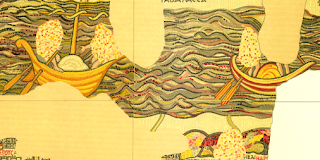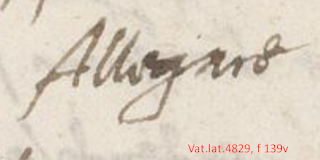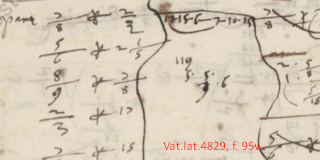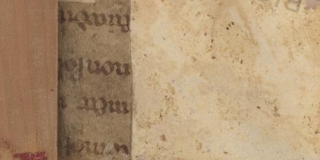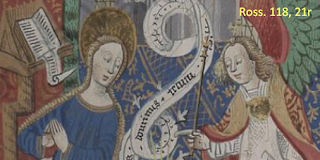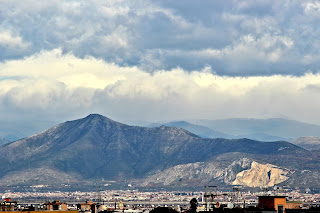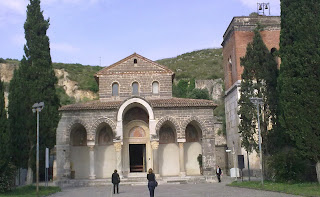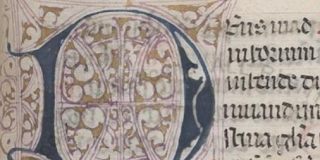The boat at left carries salt, which is there for the digging on the Dead Sea coast. Recently I asked an archaeologist friend what he thought was aboard the boat at right and he promptly said: bitumen. This surprised me, but he explained that the Dead Sea used to be covered in floating globs of asphalt. It would have glistened, so perhaps that is why the mosaic shows it rainbow-fashion.
I have since learned that under the Romans, the asphalt or bitumen was so ample that it was harvested from the beaches or fished out of the water and exported. Hot work, but it was much in demand by the glue trade around the Mediterranean (and had earlier been used, it is said, for mummification in Egypt).
One of the most notable manuscripts to be digitized in the past week by the Vatican Library is the Cartulary of the Chapter of the Holy Sepulchre, Vat.lat.4947, a set of records of land endowments and dealings by Christian priests in Crusader Jerusalem in the period 1162-1165. From a review by Olivier Guyotjeannin, I learn that the Cartulary contains a record dealing with salt and bitumen harvesting at the time of the Kingdom of Jerusalem.
I wonder how long the bitumen trade continued overall. Evidently for a good two thousand years! An account by George Frederick Wright in The International Standard Bible Encyclopedia (1915) quotes Josephus saying lumps of asphalt as big as an ox were common in his day. But by the 19th century, big asphalt seepages from the lake bottom were rare, coinciding with earthquakes, though lake dwellers still knew to harvest and sell the releases. Today the last remains are only pebble-sized.
In all, the library released 39 digitizations in the past week. My list:
- Barb.lat.813,
- Barb.lat.4400,
- Ott.lat.577,
#IamNotAPaleographer but... I think this MS might be German (Ott lat 577 f.3v)#medievaltwitter
— AaronM (@gundormr) May 26, 2019
(h/t @JBPiggin) pic.twitter.com/Cc85NLSwrR - Ross.49,
- Ross.125.pt.1 (Upgraded to HQ),
- Ross.126.pt.1,
Ross 126 - Breviary, Fransiscan
— AaronM (@gundormr) May 26, 2019
Ross 157 - Glossed Bible, starts at Romans, (12th c?)
Vat lat 4756 - Notated Office for the Cathedral of Chartres, the only surviving witness (see Fassler, M) - Ross.157,
- Ross.286,
- Urb.lat.1301,
- Vat.lat.2538,
- Vat.lat.2541,
- Vat.lat.4720,
- Vat.lat.4756 (Upgraded to HQ),
- Vat.lat.4818 (Upgraded to HQ),
- Vat.lat.4821 (Upgraded to HQ),
- Vat.lat.4822,
- Vat.lat.4824 (Upgraded to HQ),
- Vat.lat.4826, a mathematics manuscript datable to 1450, by Iacobus de Florentia. See Jordanus
- Vat.lat.4829, mathematics anthology in Italian, dated 1480, see Jordanus. The word algorithm was established in the West by this time:
Also tons of squiggly sums:
- Vat.lat.4832,
- Vat.lat.4856,
- Vat.lat.4884,
- Vat.lat.4885,
- Vat.lat.4892 (Upgraded to HQ),
- Vat.lat.4893 (Upgraded to HQ), a decretum
- Vat.lat.4907,
- Vat.lat.4919 (Upgraded to HQ),
- Vat.lat.4923, here, the small strips used for strengthening the binding formed part of the same manuscript of Gregory as is found in Vat.lat.4918 (Lowe):
Nice, 12th-century Beneventan
— Erik Kwakkel (@erik_kwakkel) May 25, 2019 - Vat.lat.4926,
- Vat.lat.4927,
- Vat.lat.4930,
- Vat.lat.4935,
- Vat.lat.4941 (Upgraded to HQ),
- Vat.lat.4947 (Upgraded to HQ), the Cartulary of the Chapter of the Holy Sepulchre (above, also discussed in a blog post two years ago).
- Vat.lat.4956.pt.1,
- Vat.lat.4956.pt.2,
- Vat.lat.4957 (Upgraded to HQ),
- Vat.lat.4959 (Upgraded to HQ),
- Vat.pers.31,
Nissenbaum, Arie (1978). 'Dead Sea Asphalts — Historical Aspects', Bulletin of the American Association of Petroleum Geologists, 62, 837–44. Online
